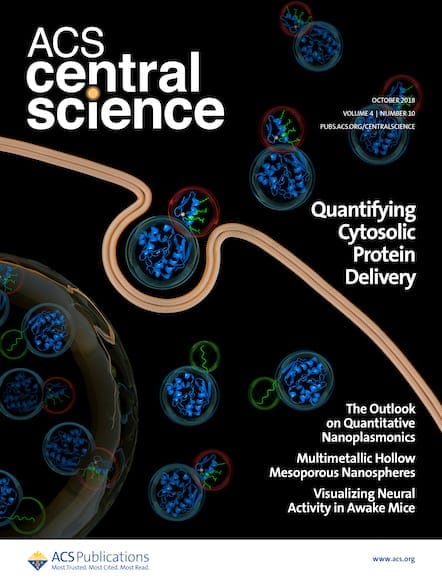A robotic system that uses ultrasound pulses to handle minuscule droplets of reagents has helped chemists to put a new reaction through its paces at lightning speed. The automated technique, known as acoustic droplet ejection, could help drug discovery labs to rapidly trial novel synthetic methods, says Alexander Dömling of the University of Groningen, who […]

A robotic system that uses ultrasound pulses to handle minuscule droplets of reagents has helped chemists to put a new reaction through its paces at lightning speed. The automated technique, known as acoustic droplet ejection, could help drug discovery labs to rapidly trial novel synthetic methods, says Alexander Dömling of the University of Groningen, who led the work.
When organic chemists invent a new reaction, they might run a few dozen iterations to show that it works with a range of different molecular building blocks. Testing each variant one at a time is slow and laborious, and it may not even provide enough evidence to reassure other researchers that the reaction will suit their own more complicated building blocks. Dömling says this is a particular problem in drug discovery, where researchers rely heavily on a small set of tried and true reactions and shy away from novel synthetic methods. The result is a suite of drug candidates that often look very similar to one another, crowded into a tiny corner of the ‘chemical space’ that represents all possible molecules.
One of the isoquinolines made using an acoustic droplet ejection reaction screening technique. The researchers subsequently scaled up some of the reactions they tested, making roughly 10g of this compound.
Seeking a faster way to explore the scope of new reactions, Dömling’s team turned to acoustic dispensing, a technique used by cell biologists and biochemists since the mid-2000s to transfer samples between plates that contain hundreds of little wells. This relies on precise ultrasound pulses to shoot a droplet of liquid out of a well and up into a fresh well on an inverted plate above, where it sticks. Dömling’s team collaborated with AstraZeneca and Labcyte, which makes acoustic dispensers that can transfer a few hundred nanoliter-sized droplets per second. The system automatically applies the acoustic pulses to one well at a time, and moves the destination plate so that it captures pre-programmed combinations of ingredients. It’s much faster than robotic injectors, the alternative for high-throughput liquid transfer, Dömling says.
This enabled the researchers to investigate a reaction that produces isoquinolines, common drug structure motifs, by uniting four building blocks—an amine, a carboxylic acid, an acetaldehyde and an isocyanide. To assess the range of isoquinolines that could be produced by this reaction, they used the acoustic dispenser to prepare random combinations of seven different amines and 62 isocyanides in a 384-well plate along with the other two reactants.
Once the reaction was complete, the team analyzed the products using chromatography-mass spectrometry methods to reveal whether certain chemical groups on the building blocks stymied the reaction. That survey, led by Groningen’s Shabnam Shaabani, found that more than 80% of the reactions gave the expected isoquinoline products. In all, the process took barely two days and used less than 50 mg of starting materials.
“It produces a large amount of data that’s really useful, in a relatively small amount of time,” says Stephen G. Newman, who works on high-throughput reaction discovery at the University of Ottawa.
In addition to reducing the amount of chemicals needed, the system also avoids wasting the disposable plastic pipette tips used by traditional robotic systems, Dömling points out.
“I think it’s a wonderful addition to the toolbox,” says Tim Cernak at the University of Michigan, who develops computer-assisted synthesis methods and was not involved in the research.
Newman and Cernak note that engineering solutions will be needed to expand the range of reactions that could be investigated by this method, such as those using solid reagents, volatile solvents, or air-sensitive compounds. “As an optimist, I’d say most of these are solvable problems,” Newman says.
“There’s something incredibly satisfying about looking at those little droplets flying across,” Cernak adds. “It inspires synthetic chemists to recognize how far biochemical experimentation has come. Now it’s our opportunity to get into the game.”
This article is reproduced with permission from C&EN (© American Chemical Society). The article was first published on March 11, 2019.
